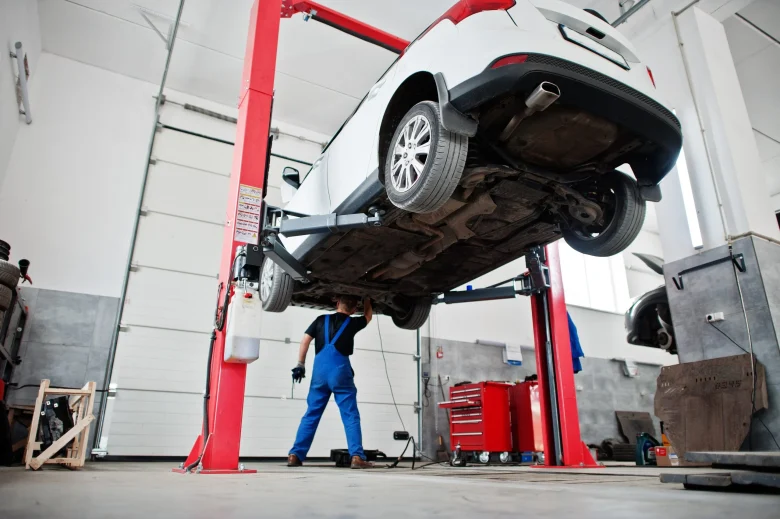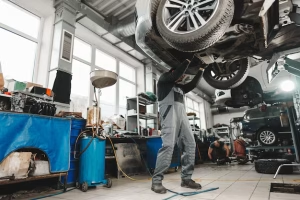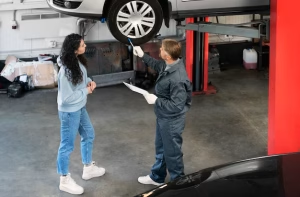DIY car repair and maintenance offers many advantages, from cost savings and learning opportunities, to personal fulfillment and pride of achievement.
But it is essential to be mindful of the risks and limitations associated with DIY auto repair. Certain repairs requiring expert mechanics’ expertise such as those involving safety-critical components should always be left to professionals.
1. Tools
Tools you use can make or break a DIY project, particularly car maintenance tasks. Without adequate tools, even simple car maintenance tasks may become complex or never get completed at all. Investing in quality tools is an investment that pays for itself by decreasing the need to visit professional mechanics for repairs and servicing.
Starter tool kits provide DIY car repair enthusiasts with all of the essential items, from socket sets and wrenches, ratchet handles and wrenches, wrenches and pliers, to breaker bars. A breaker bar may come in handy for stubborn lug nuts while an air compressor makes quick work of carb cleaning, tire inflation and powering devices like nail guns. Lubricants and penetrating oil should be available to ensure proper function of moving parts while goggles and work gloves offer protection from debris or fluids.
Other necessary tools include a wrench for an oil filter and funnel for quick, mess-free refills of engine oil. Duct tape can quickly repair numerous issues; jumper cables will keep you from being left stranded with a dead battery; while an acetylene torch serves as an invaluable multi-tool that allows users to open tight bolts, soften heavy undercoating for easier removal, cut metal sheets or cut metal plate without leaving their seat!
2. Parts
With a properly equipped toolbox and essential car parts, DIY repairs become much simpler and less time consuming. Knowing which components you require for specific tasks – replacing brake pads or changing a flat tire for instance – and having the proper tools on hand, DIY repair projects become much more achievable.
Car owners can save money and experience a sense of achievement by performing basic maintenance and repairs themselves instead of paying a mechanic to take care of it for them. Although DIY success may present its own set of challenges – oil changes, air filter replacements and brake pad replacements may all fall under this heading – troubleshooting and diagnosing issues might require more specialized tools like an automotive stethoscope, vacuum pressure gauge or digital multimeter.
Online auto parts shopping has become increasingly common, and you have numerous options to select from. When making a selection, be sure to compare selection, prices, customer service options and shipping methods before making a final decision. Summit Racing Equipment and Jegs High Performance are two reputable online retailers with wide ranges of parts for any budget; 1A Auto offers tutorials and support as well.
After gathering all the required car parts and tools for your project, it’s time to get down to work! Be sure to wear protective equipment like gloves when working around any spills; establish routines like returning tools back where they belong after every day’s use or disposing of waste material properly at the end of each day for added safety in your workspace.
3. Time
Doing your own car repairs can save money and provide a sense of pride, yet these projects may require careful planning to ensure success.
First step to successful vehicle repair: identify which projects can be handled yourself and which should be left for professionals. Consult with local mechanics or access online resources such as videos and forums for guidance in making this determination.
Also, keeping a car repair journal and log can be extremely helpful in planning future maintenance and identifying patterns of wear and tear. Furthermore, save receipts from tools or parts purchased so you have recourse if any are found defective when they arrive or fail prematurely.
Work smarter, not harder if you want to save time! Rushing can often result in waste when working on cars; taking time and care when reading instructions and troubleshooting guides can significantly increase your odds of success. Furthermore, the internet provides an invaluable source for acquiring new techniques as well as replacement parts at competitive prices; it may even help prevent costly mistakes by providing information about potential issues.
4. Safety
DIY car repair offers vehicle owners a sense of independence and control, but also raises certain safety issues. DIYers unfamiliar with modern vehicle mechanics could misdiagnose or perform subpar repairs which lead to further damages and injuries.
Another potential risk is exposure to toxic chemicals and fumes, including gasoline or chemical cleaners that build up in the air if not ventilated properly, leading to dizziness or even death if inhaled. To protect yourself against this hazard, always work in a well-ventilated space while working on vehicles, with all tools secured so as not to fall or shift during your process.
DIYers must make sure that they remain within their skill level when undertaking DIY tasks, for instance attempting to work on complex electrical systems or engine problems could prove hazardous for novices, leading to costly errors. Therefore, it’s crucial that DIYers seek professional assistance if the task exceeds their expertise or poses significant risks.
DIY auto repair can be an energizing experience if done properly. By following expert tips, safety guidelines, and common sense advice, it’s possible to perform many minor fixes and maintenance tasks on your own – though it’s wiser to consult a professional for major repairs or post-collision issues.



